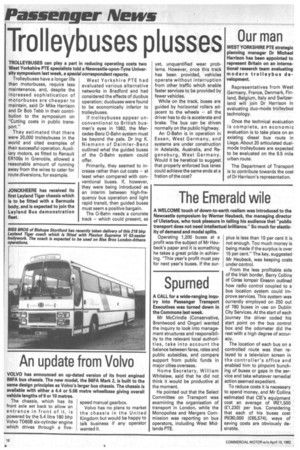Trolleybuses plusses
Page 12

If you've noticed an error in this article please click here to report it so we can fix it.
TROLLEYBUSES can play a part in reducing operating costs two West Yorkshire PTE specialists told a Newcastle-upon-Tyne University symposium last week, a special correspondent reports.
Trolleybuses have a longer life than motorbuses, require less maintenance, and, despite the increased sophistication of motorbuses are cheaper to maintain, said Dr Mike Harrison and Dr Bob Tebb in their contribution to the symposium on "Cutting costs in public transport."
They estimated that there were 20,000 trolleybuses in the world and cited examples of their successful operation. Auxiliary motors, as fitted to Renault ER100s in Grenoble, allowed a reasonable amount of running away from the wires to cater for route diversions, for example. West Yorkshire PTE had evaluated various alternative networks in Bradford and had considered the effects of duobus operation; duobuses were found to be economically inferior to trolleybuses.
If trolleybuses appear unconventional to British busmen's eyes in 1982, the Mercedes-Benz O-Bahn system must be beyond the pale. Dr Ing K. Niemann of Daimler-Benz outlined what the guided buses of the O-Bahn system could offer.
Primarily, they seemed to increase rather than cut costs — at least when compared with conventional buses. If, however, they were being introduced as an interim between high-frequency bus operation and light rapid transit, then guided buses must seem a positive bargain.
The O-Bahn needs a concrete track — which could present, as yet, unquantified wear problems. However, once this track has been provided, vehicles operate without interruption from other traffic which enable faster services to be provided by fewer vehicles.
While on the track, buses are guided by horizontal rollers adjacent to the wheels — all the driver has to do is accelerate and brake. The bus can be driven normally on the public highway.
An O-Bahn is in operation in Essen, West Germany, and systems are under construction in Adelaide, Australia, and Reg en sb u rg, West Germany. Would it be heretical to suggest. that properly enforced bus lanes could achieve the same ends at a fration of the cost?




















































